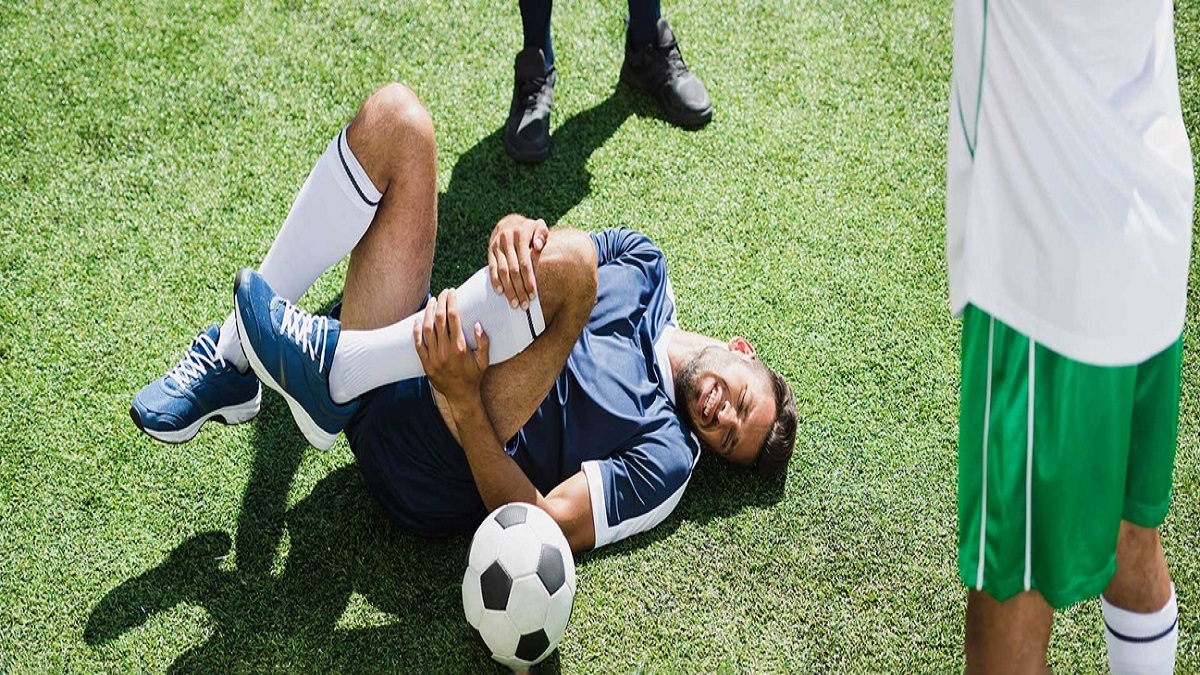Physical activity and sports participation are encouraged by all health care professionals because they have numerous health benefits. There is, however, a significant burden of sport-related musculoskeletal injury, with youth and young adult populations bearing the greatest risk. Primary injury prevention must be incorporated and made a public health priority, as this will have significant implications for reducing long-term consequences of musculoskeletal injuries, such as early post-traumatic osteoarthritis.
Here are a few injury prevention tips that can help you to protect yourself from sports related injuries.
Prepare Yourself
A warm-up should precede every workout. It gets the body ready for exercise by raising the heart rate and increasing blood flow to the skeletal muscles, which can help prevent injury.
Warm up for at least 5-10 minutes with a gentle cardiovascular exercise that causes you to sweat.
Finish your warm-up with sport-specific movements that, at a lower intensity, mimic what the rest of your workout will require of your body. This prepares your body for what comes next.
Stretching
Stretch your muscles after they have warmed up so that they are more elastic and ready to be stretched.
Static stretches (holding each position for 10-30 seconds) or dynamic stretches (moving the body through a functional range of motion) will help prepare the muscles, joints, and tendons for work by allowing them to move freely through a full active range of motion.
The better the body prepares for the workout, the less likely it is to be injured.
Proper Progress
Begin your workout gradually. To avoid muscle soreness and tightness, avoid doing too much, too quickly.
Increase the amount and intensity of the workout gradually over time. As the exercise becomes too easy, a 5% increase is a safe progression.
Use only safe, properly fitted equipment.
Cool down
This is the most frequently overlooked aspect of the workout. It aids in the safe return of the body, heart rate, and muscles to their resting state.
Stretch for 5-10 minutes after 5-10 minutes of low-intensity cardiovascular activity.
Cooling down immediately following your workout will help reduce delayed onset muscle soreness and aid in recovery, preparing your body for the next workout.
Read More: Physiotherapist vs Chiropractor: How Do They Differ? – About Pakistan
Pay Attention to Your Body
Aches and pains in joints or muscles that do not go away in 24-48 hours should not be ignored. These could be warning signs of a more serious injury.
To avoid injury, take a day off or cross-train if your body is too sore or tired from a previous workout.
Rest and recuperation
Rest is essential for avoiding injury and seeing results from your training programme. You cannot become faster or stronger unless you give your body time to heal and recover.
Rest days should be taken at least once a week.
You can use one of your rest days as an active recovery day, for example, by taking a gentle yoga class instead of a walk.
Keep an eye out for others.
Some rules have nothing to do with accumulating points or incurring penalties. Some rules are simply intended to protect others and to be courteous. In baseball or softball, for example, the batter cannot fling the bat after hitting the ball and running to first base. They must drop it so that no one is injured. Similarly, a diver would check that the pool was clear before diving in. They might land on someone else if they don’t.
Communicating on the field is one way to keep an eye out for others. A baseball player in the outfield, for example, might yell “I got it” to avoid colliding with another outfielder.
Maintain a Healthy Diet
A healthy diet rich in whole foods and adequate amounts of the macronutrients protein, fat, and carbohydrates is the best complement to a true injury prevention plan.
A high-sugar, processed-food diet can contribute to muscle weakness and decreased cardiovascular endurance.
Hydration is equally important and should be maintained with water and electrolytes before, during, and after your workouts.
If you are injured, you should not play.
This is extremely important. It’s tempting to return to the game after an injury if you enjoy sports. However, playing while injured — or before an injury has fully healed — is a bad idea. It can result in a more serious injury that will keep you out for a long time.
If you’ve been hurt, tell your parents and coaches. When necessary, see a doctor about your injuries and follow their advice on how and when to return to practise and play.
Understand the Game’s Rules
Traffic lights at intersections help to prevent collisions between the many cars and trucks that share the roads. This works because drivers understand and follow the rules. The same is true for sports.
Fewer injuries occur when players understand the game’s rules. You and the other players are aware of what to expect from one another. In soccer, for example, you can’t come from behind and crash into a player’s legs to steal the ball. It is preferable — and safer — to pursue the ball rather than the player.
It helps to understand the plays and your role in each one in sports that use them. Being in the right place at the right time can help.
Wear Safety Equipment
Protective gear is anything you wear to keep yourself safe from harm. The equipment you wear is determined by the sport you participate in.
Helmets are the most common type of protective equipment. They safeguard your vital head while participating in sports such as football, hockey, baseball, softball, biking, skateboarding, and inline skating, to name a few.
Check that you’re wearing the appropriate helmet for your sport. For example, do not wear your baseball batting helmet while playing football! Your helmet should be snug but comfortable, and if it has a strap, like a bike helmet, it should be fastened. Otherwise, it will fall off just as you need it.
Check that you’re wearing the appropriate helmet for your sport. For example, do not wear your baseball batting helmet while playing football! Your helmet should be snug but comfortable, and if it has a strap, like a bike helmet, it should be fastened. Otherwise, it will fall off just as you need it.
Read More: Why Physiotherapy is Important for Health – About Pakistan
Other sports necessitate the use of eye protection, mouthguards, pads, wrist, elbow, and knee guards, as well as a protective cup (for boys). Don’t forget about your feet. Football, baseball, softball, and soccer all use cleats. These shoes have special rubber or plastic points on the soles that help your feet grip the ground while running.
Discuss your equipment requirements with your parents or coach. Then put that on.























